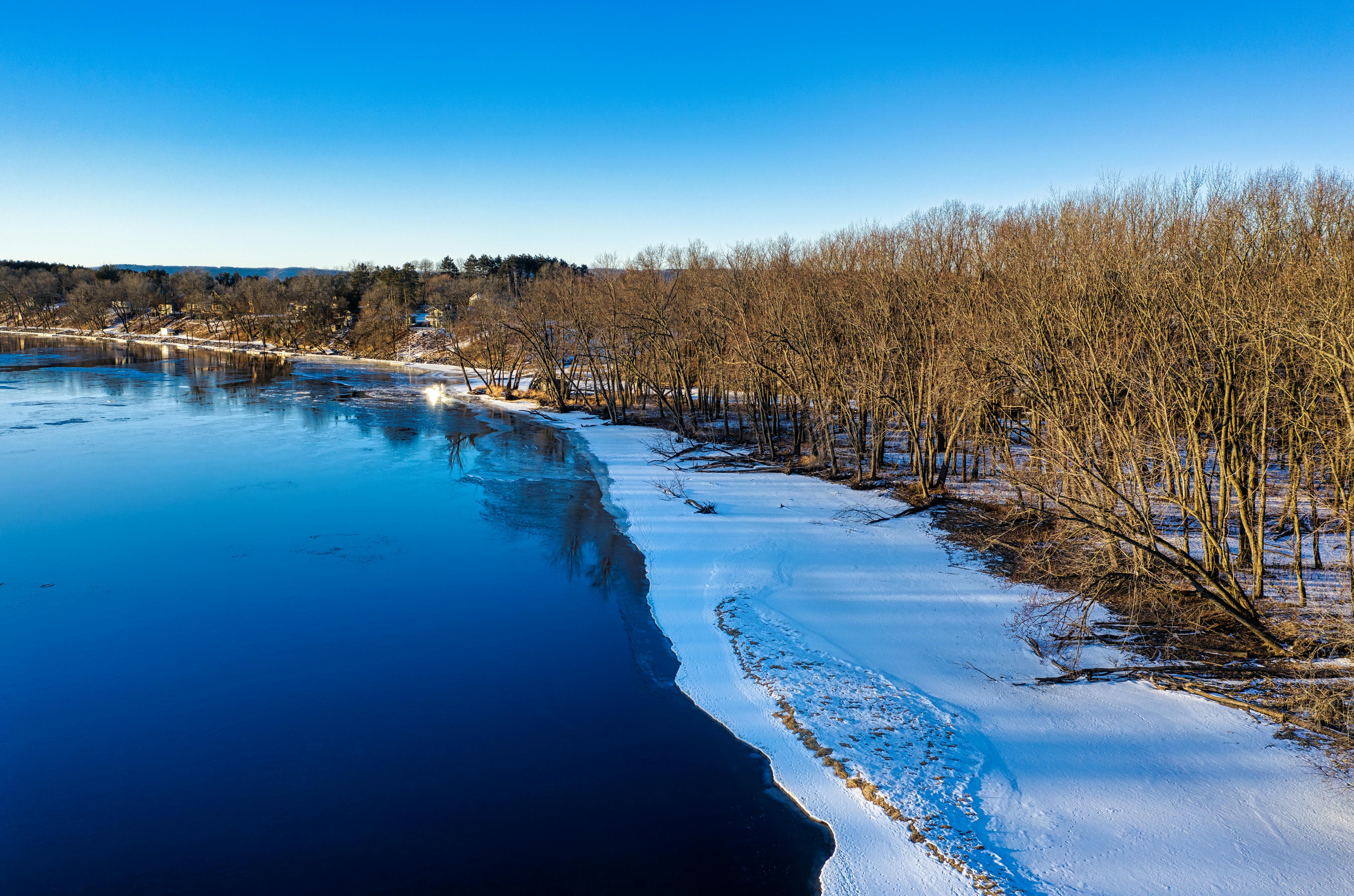Get ready to embark on a captivating journey as you delve into the rich history of Woodbury, MN. From its humble beginnings as a small farming community to its thriving present-day status as one of Minnesota’s fastest-growing cities, Woodbury has a fascinating story to tell. Discover how this town’s past has shaped its present and explore the unique features that make Woodbury a truly special place to live and visit. So grab a cup of coffee, sit back, and let’s dive into the captivating history of Woodbury, MN.

Native American Presence
Woodbury, MN has a rich and diverse history that begins with the presence of Native American tribes in the area. Prior to European settlement, the land was inhabited by Dakota and Ojibwe tribes, who relied on the bountiful resources provided by the St. Croix River and the surrounding wilderness. These early Native American inhabitants played a vital role in shaping the cultural and ecological landscape of the region.
Early Native American Inhabitants
The Dakota and Ojibwe tribes were skilled hunters, gatherers, and farmers. They lived off the land, utilizing the abundant wildlife, fish, and native plants that the Woodbury area had to offer. These tribes had a deep connection to the land, seeing it as both a provider and a spiritual force. They had established villages and trading networks along the St. Croix River, which served as a crucial hub for the exchange of goods, ideas, and cultural practices.
Importance of the St. Croix River
The St. Croix River played a pivotal role in the lives of the Native American tribes who resided in the Woodbury area. It served as a transportation route, allowing them to travel and trade with other tribes. The river also provided a rich source of fish, which supplemented their diet. Moreover, the river influenced the settlement patterns of the tribes, as they favored locations near its banks for easy access to water.
Impact of European Encroachment
With the arrival of European settlers, the Native American presence in the Woodbury area faced significant challenges. The expansion of European settlements and the desire for land and resources disrupted the traditional way of life for the indigenous tribes. Treaties were negotiated, resulting in the forced removal of Native American tribes from their ancestral lands. This displacement and loss of territory had a profound impact on the Native American communities and their connection to the region.
Pioneer Days
As European settlers began to establish permanent settlements in the Woodbury area, a new chapter in the region’s history began – the pioneer days. These early pioneers faced numerous challenges but were driven by a spirit of adventure and a desire to build a better life for themselves and their families.
Settlement of Woodbury
Woodbury’s history as a settlement dates back to the mid-1800s when the first pioneers arrived in the area. The town was named after Levi Woodbury, a prominent Supreme Court justice. These early settlers were primarily farmers who saw the fertile land as an opportunity to establish thriving agricultural communities.

First Pioneers and Agriculture
The first pioneers of Woodbury focused on agriculture as their main source of livelihood. They cleared the land, built homesteads, and cultivated crops such as wheat, corn, and potatoes. These early farming communities were self-sufficient and relied on their agricultural produce for sustenance and economic stability.
The Importance of Logging
In addition to agriculture, logging played a significant role in the early days of Woodbury. The abundant forests surrounding the area provided an opportunity for the logging industry to flourish. Timber was harvested and transported via the St. Croix River, which served as a vital transportation route for the booming logging industry. Logging camps were established, bringing growth and economic prosperity to the region.
Growth and Development
As Woodbury expanded, the township began to witness further growth and development across different sectors. The emergence of Woodbury as a township brought with it the establishment of schools, churches, and the arrival of the railroad.
Emergence of Woodbury as a Township
Woodbury officially became a township in 1858, marking a significant milestone in its history. The formation of a township allowed for governance and the development of civic institutions to meet the needs of the growing population. Town meetings, local officials, and a sense of community began to take shape.
Establishing Schools and Churches
With the growth of Woodbury as a township, the establishment of schools and churches became a priority for the residents. Schools provided education for the children, equipping them with knowledge and skills for the future. Churches, on the other hand, brought people together and fostered a sense of belonging and spiritual connection.
The Arrival of the Railroad
The arrival of the railroad in Woodbury was a game-changer for the township. It brought increased connectivity and transportation opportunities, allowing for easier movement of goods and people. The railroad facilitated the growth of industries such as logging and agriculture by providing a more efficient means of transporting products to markets. It also opened up opportunities for trade and commerce, fueling the local economy.

World War I and Prohibition Era
Woodbury, like many other towns and cities across the United States, experienced the significant impact of World War I and the Prohibition era in the early 20th century.
Woodbury’s Contribution to World War I
The community of Woodbury rallied behind the war effort during World War I. Many residents volunteered for military service, and those who stayed back supported the troops through various means. Industries in Woodbury shifted their production towards war materials, contributing to the overall war effort.
Prohibition and Its Effects on the Community
The Prohibition era, which lasted from 1920 to 1933, had a profound impact on the Woodbury community. The ban on the sale, production, and distribution of alcoholic beverages resulted in the closure of bars, breweries, and distilleries. Many residents who relied on these industries for their livelihoods were forced to find alternative means of employment.
Bootlegging and Organized Crime
The Prohibition era also gave rise to bootlegging and organized crime in Woodbury. Despite the ban on alcohol, there was a high demand for it, leading to the establishment of illicit operations to produce and distribute alcoholic beverages. This illegal activity brought its own set of challenges and issues to the community, including a rise in organized crime and corruption.
Great Depression and World War II
Woodbury, like the rest of the country, was not immune to the economic challenges brought about by the Great Depression. However, the community rallied together during World War II to support the war effort and contribute to the home front.
Impact of the Great Depression on Woodbury
The Great Depression had a severe impact on Woodbury’s economy. Businesses shut down, and many residents faced hardships and unemployment. However, the community came together, offering support to one another in various forms, such as forming cooperatives and community-based initiatives.

Woodbury’s Involvement in World War II
During World War II, Woodbury residents once again answered the call to serve their country. Many individuals enlisted in the military, while others took on jobs in industries supporting the war effort. The community actively participated in bond drives, rationing programs, and other activities to support the troops abroad.
Home Front Efforts
Woodbury’s home front efforts during World War II were crucial to the overall war effort. The community organized scrap metal drives, Victory Gardens, and Red Cross initiatives. Women played an essential role by joining the workforce in industries that were traditionally dominated by men, contributing significantly to the war effort.
Post-War Suburbanization
After World War II, Woodbury, like many other areas across America, experienced a period of suburbanization. The combination of increased automobile usage, affordable housing, and the development of infrastructure significantly impacted the growth and transformation of the township.
Housing Boom and Suburban Development
The post-war years saw a housing boom in Woodbury, with families seeking the American dream of homeownership. Affordable housing developments emerged, attracting new residents to the area. Suburban neighborhoods sprouted, offering a quieter and more spacious alternative to the urban centers.
Creation of Woodbury as a Village
In 1967, Woodbury was officially incorporated as a village, signifying its growth and transformation into a more structured and organized community. This step allowed for more local governance and the ability to better meet the needs of the growing population.
Impact of Interstate Highways
The construction of interstate highways, such as Interstate 94 and I-494, had a significant impact on Woodbury’s growth. These highways provided easy accessibility to and from the township, making it an attractive destination for those seeking a suburban lifestyle while still having access to urban amenities in nearby cities.

Modern Growth and Diversification
In recent decades, Woodbury has experienced remarkable growth and diversification. The township has become a thriving economic center with a diverse range of industries and a growing population that reflects changing demographics.
Economic Expansion and Business Development
Woodbury has seen a surge in economic expansion and business development. The township is home to a mix of small businesses, corporate offices, and retail establishments. Its strategic location and robust infrastructure have attracted investments from various industries, contributing to the local economy and job growth.
Population Growth and Changing Demographics
Woodbury has witnessed significant population growth, attracting residents from diverse backgrounds. This changing demographic landscape has brought cultural diversity to the township, enriching the community and creating a vibrant environment.
Preserving Woodbury’s Natural Environment
Amidst the growth and development, Woodbury remains committed to preserving its natural environment. The township has prioritized initiatives and policies that protect green spaces, promote sustainable practices, and ensure the conservation of its natural resources for future generations to enjoy.
Celebrating Woodbury’s Cultural Diversity
Woodbury takes pride in its cultural diversity and celebrates its multicultural heritage through various community events and initiatives. Festivals, cultural fairs, and ethnic celebrations provide opportunities for residents to come together, share their traditions, and foster a sense of unity.
Events and Festivals
Woodbury hosts a range of events and festivals throughout the year that bring the community together. These include music festivals, art exhibitions, heritage celebrations, and food fairs. These events showcase the township’s rich cultural heritage and provide opportunities for residents to engage with one another.
Parks and Recreation Opportunities
Woodbury boasts a robust parks and recreation system, offering a wide range of outdoor activities and amenities for residents and visitors to enjoy. The township’s numerous parks, trails, and recreational facilities provide opportunities for hiking, biking, picnicking, and other activities that promote an active and healthy lifestyle.
Quality Education in Woodbury
Woodbury prides itself on providing quality education to its residents. The township is home to highly regarded public and private schools, offering comprehensive and innovative educational programs. These institutions prepare students for success and contribute to Woodbury’s reputation as a desirable place for families to live.
Focus on Science and Technology
Woodbury has embraced a focus on science and technology, recognizing the importance of these fields in the modern world. The township supports initiatives and programs that promote STEM education, research, and innovation, preparing students for the evolving demands of the future.
Advancements in Healthcare and Research
Woodbury has witnessed advancements in healthcare and research, with the establishment of medical facilities and research institutions. These developments have brought cutting-edge healthcare services and innovative research opportunities to the community, contributing to the overall well-being of residents and furthering scientific knowledge.
Historical Preservation Efforts
Woodbury recognizes the importance of preserving its historical heritage and has undertaken efforts to protect and promote its historical landmarks and sites. Preservation projects, restoration efforts, and educational programs aim to ensure that Woodbury’s past is cherished and continues to be a part of its present and future.
Restoring and Protecting Landmarks
Woodbury has made significant strides in restoring and protecting its historical landmarks. Preservation initiatives have ensured that iconic buildings, sites, and structures are maintained and respected, allowing residents and visitors to appreciate the township’s rich history.
Community Engagement in Preserving History
Preserving history is not solely the responsibility of the local authorities but also the community at large. Woodbury encourages community engagement in preserving its history through volunteer programs, educational workshops, and collective efforts. By involving residents in the process, Woodbury ensures that its historical heritage is valued and passed on to future generations.
In conclusion, Woodbury, MN has a rich and diverse history that encompasses the Native American presence, pioneer days, growth and development, significant historical events, and modernization. From its early beginnings as a Native American settlement to its transformation into a vibrant and thriving community, Woodbury’s history reflects the journey of its residents and the spirit of resiliency and progress that has shaped the township. By preserving its past, celebrating its cultural diversity, and embracing innovation, Woodbury continues to evolve while keeping its roots firmly planted in its historical heritage.

